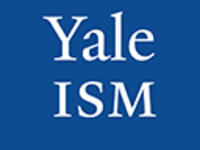
James Taylor, director
Programming and Musical Direction by Simon Carrington
Madrigal History Tour
Marquand Chapel
409 Prospect Street, New Haven
Free; no tickets required.
Program Note by Simon Carrington
The madrigal is perhaps the most satisfying form of music ever devised for recreational singing. Our collection this evening has been drawn mainly from the repertoire presented in the BBC Television series “The King’s Singers’ Madrigal History Tour” in 1985. Those choices were made then to illustrate the enormous range of styles covered by the term “madrigal.” It was not possible to include examples by all the best known composers, but we maintained then that every piece was enjoyable to sing and worked well in concert performance.
The collection illustrates the development of the secular part -song from the Italian frottola and Spanish villancico of the late 15th century to the sophisticated contrapuntal style of the English madrigalists of the early 17th century. To music publishers of the period nearly all settings of secular verse were called madrigals, including sonnets, popular and dialect poems, and ballets. The frottola was usually for solo voice with a simple, choral accompaniment either for instruments or other voices. The words tended to be frivolous and often ribald. Gradually the more contrapuntal style of the Netherland composers - the oltremontani, from the other side of the Alps - began to inspire a new generation of madrigal composers to seek to marry this style to the swift and supple rhythms of Italian poetry. Italy’s greatest lyric poet, Petrarch, enjoyed a great revival during the 16th century and his expressive and flexible verse forms were used as models by poets and composers alike. The first publications of madrigals in the 1530s and 1540s were highly successful, and revealed an avid market of literate and sophisticated people who relished the fashionable pastime of singing settings of poems about life and love. Each vocal line was now equally important, so that no-one with the necessary ability needed to feel left out at after-dinner entertainments!
Composers from Spain, Germany, and France travelled to Italy to learn, or obtained published music to study. They adopted the madrigalists’ musical style and applied it to their own vernacular poetry. In Spain the villancico thrived well into the 16th century and was gradually developed polyphonically by Juan Vasquez and others. The French composers specialized in “courtly love” songs and in lighter settings of the more frivolous aspects of love. In England the madrigal enjoyed a remarkable Indian Summer during the last years of the reign of Queen Elizabeth I, mainly due to the influence of one man, Thomas Morley. In his much-quoted book, A Plaine and Easie Introduction to Practicall Musicke, he outlined the qualities appropriate to both composers and performers of madrigals: They should be of “an amorous humour … sometimes wanton, sometimes drooping, sometimes grave and staid … and the more variety [they] show the better [they] shall please!”
It has been a great privilege for me to coach the current singers in the graduate voice program with whose establishment I was so closely involved. Their chosen discipline requires an ability not only to sing solos beautifully but also to be acutely aware of the demands of ensemble singing. No art form highlights those demands better than madrigals!
The concert on March 3 is presented by Yale Institute of Sacred Music. It is free and open to the public; no tickets are required. More information is at 203-432-5062.